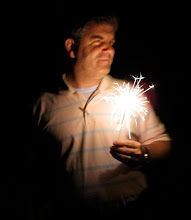On the evening of March 5th, 1776, General George Washington and his rag-tag army of 2,000 volunteers completed staging what would turn out to be one of the most important early victories of the American Revolution-- Colonel Henry Knox had successfully transported 59 canon and ordnance 300 miles from the vacant Fort Ticonderoga to Boston, and the rebels prepared the first large-scale prefabrication in US history. That evening they moved the canon, barrels filled with sand and stone (to be used as breastworks, or to be rolled down the hill on charging Red-Coats, if it came to that . . . ), and facines (bundles of branches or logs) - creating the effect of a fortified wall atop the ridge of Dorchester Heights, overlooking Boston and the British ships in Boston harbor.


General William Howe - commander of the British forces occupying Boston at the time, is reported to have remarked when he saw the fortifications the next morning-- "The Rebels have done more in one night than my whole army would have done in a month" -- The result of this effort was that the 11,000 occupying troops and 1,000 loyalists fled Boston to Nova Scotia - without a shot being fired--
Isn't It Great When A Plan Comes Together?
A lot of coincidences contributed to the success of the efforts of Washington, Knox and the Rebels-- In the end, it helped convince the British that the Americans were serious about Independence (It took another 5 years to actually achieve that goal . . . ). The fact that they had a vision, a plan and buy-in by all the participants set up the whole effort at Dorchester Heights to even have a chance to succeed.
5 Lessons from the Fortification of Dorchester Heights:
- First Get All the Materials - Without the canon, gunpowder, ordnance, barrels/birch trees, the Rebels couldn't have even started work on the fortifications.
- Stage Assemblies (then transport into position) - They couldn't have built the fortifications in place without risking attack. Building the facines and gabions down the hill (out of sight) and moving them into place at night was the only chance they had.
- Plan Logistics (address site considerations) - The Rebels used straw to deaden the sound of the wagon wheels transporting the pre-fabricated fortifications and canon, to avoid calling attention to the movements.
- Use Weather to Best Advantage (often a judgement call) - General Howe had considered retaliating, but a snowstorm dampened his confidence, and the decision was made to completely evacuate, including all ships from the Boston harbor.
- Be Ready With Contingency Plans - Washington expected retaliation, and had planned escape routes that would have been difficult for the British to follow. The fortifications were designed as both blockades, and if worse came to worse, they could be used as weapons.

How 'bout Them Forefathers?
Thinking through how you plan to build something is as critical as the construction effort itself. The goals for any construction project should include minimizing time and resources, without anyone getting hurt--
Here is a list of 6 "Pre- Build" Considerations:
- How Can the Project Be Accomplished Safely? - Everyone Goes Home Unhurt
- What is the Optimal Sequence of Activities? - Critical Path
- What Materials or Processes are Similar? - Economies of Stacking, etc.
- Which Parts are Standard? - Can More Parts Be Standardized?
- What Adjacencies Need to Be Considered? - Restrictions, Services, Exit Plan
- Does Any Aspect of the project lend itself to Pre-Fabrication & Transport to Site?
Prefabrication or Modularized Assembly may not be an option for all situations, but considering aspects or portions of the project for Pre-Fab may drive better work/assembly patterns and solutions.
Related Trivia:
George Washington went on to win the revolutionary war, defeating the strongest, best-equipped, best-trained military machine in the world at the time, through leading ordinary men to extraordinary accomplishments - by sheer perseverance and belief in the goal of independence.
More information on George Washington:
Henry Knox went on to be Washington's first Secretary of War, found the Society of the Cincinnati (an organization of American Military officers), and Fort Knox and Knoxville, Tennessee were named in his honor.

More information on Henry Knox:
Recommended Books:
"1776" by David McCullough

No comments:
Post a Comment